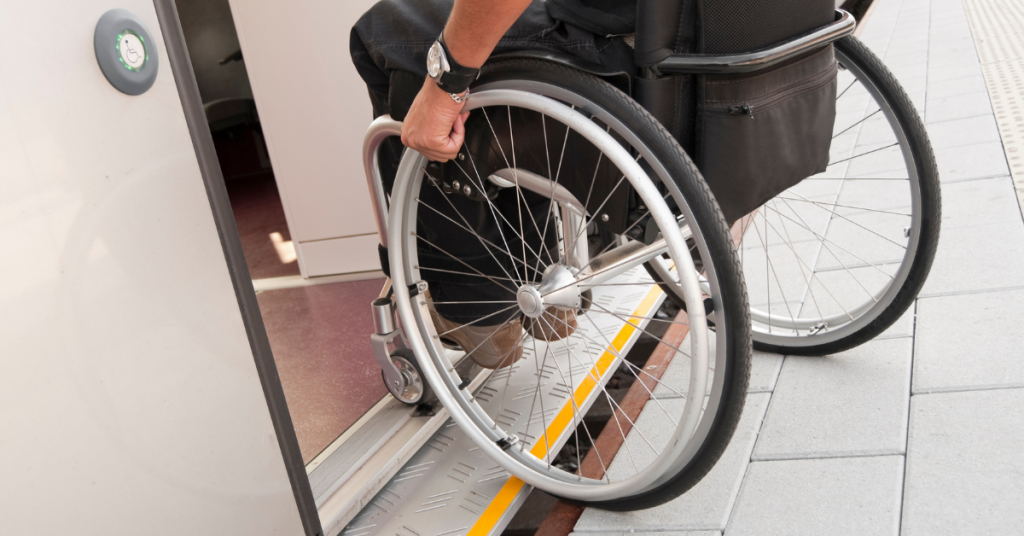4 Ways to Increase Your Shop's Accessibility
As a business owner, it’s important to make sure your shop is accessible to customers with disabilities. There are a few things you can do to ensure this:
– Make sure there is an accessible entrance to your shop. This may include a ramp or wide doorways.
– Ensure that there is plenty of space inside for customers in wheelchairs or with other mobility impairments.
– Provide clear signage throughout the shop so that customers can easily find what they’re looking for.
– Train your staff on how to best assist customers with disabilities.
In this blog post, we are going to look at these four ways to increase your shop’s accessibility.

1. Make sure there is an accessible entrance to your shop. This may include a ramp or wide doorways.
When choosing a commercial door, it’s important to make sure that it is accessible for everyone. There are a few considerations when you are thinking about accessibility for commercial doors:
It should be easy to open and use, regardless of your physical abilities.
Things like the angle of the door, what kind of handle you choose, and whether you have any automatic door capabilities are all things to think about as you choose a new shop door.
It should be wide enough for people to enter and exit the building, including with wheelchairs.
This can be challenging, particularly in conservation areas. Thinking about the width of your door includes the porch area, angle, and whether the threshold of the door has any steps or trip hazards that could be an issue when wheeling through it. This should be a consideration for both entering and exiting the property.
It should avoid awkward changes in ground level to avoid customers and employees tripping, and to make it easy for wheelchair users to access.
Ground level changes can be dangerous for customers and employees, as they could easily trip over any changes in level. You should make sure that the new door is at the same level as the existing door, or that you level the entryway if your old door has any issues.
You may also need to provide a suitable ramp, especially if there are any steps or changes that would make accessibility difficult or impossible.
2. Ensure that there is plenty of space inside for customers in wheelchairs or with other mobility impairments.
One way to make sure your shop is accessible for customers in wheelchairs is to ensure that there is plenty of space inside. This may mean having wide aisles and clear signage throughout the shop.
Make sure your shop is easy to navigate, with a clear layout and plenty of space; Make sure your shop has wide aisles and plenty of space to move around.
When considering wheelchair width, you should make sure there is enough space in your shop for manual and electric wheelchairs, as well as scooters and mobility aids that may not fit within the definition of a wheelchair.
Aisles and walkways should be clear of any obstacles or hazards, and any temporary displays should be checked for accessibility during seasonal promotions.
You should also be mindful of where you place shelves and racks so that they are accessible to people in wheelchairs, displaying products at different levels so that people at various heights can reach them.
3. Provide clear signage throughout the shop so that customers can easily find what they’re looking for.
Another accessibility consideration for shops is to ensure that signage is clear and easy to read so that customers can easily find what they are looking for without having to ask for assistance.
Some of the ways you can make your shop’s signage more accessible include:
- Using high contrast colours so that letters are clear against the background.
- Using large font sizes in sans serif typefaces so they are clear to read.
- Using Braille and raised letters to create tactile signs.
- Avoiding busy patterns and cluttered designs.
- Installing them at heights and angles that can be seen by people at different heights.
4. Train your staff on how to best assist customers with disabilities.
Another way to ensure your shop is accessible to customers with disabilities is to train your staff on how to best assist them. This includes things like knowing how to properly use a wheelchair ramp or how to provide assistance without being intrusive.
Offer customer assistance if needed, and be patient with those who are taking their time to browse.
By taking these steps, you can make sure that everyone can enjoy shopping at your store. It may be worth looking for local council grants and government schemes that help business owners pay for disability access improvements, such as wheelchair ramps or disabled parking spaces.
If you need to make any improvements to your shop front, including making sure your commercial doors are accessible and your entryway meets the legal requirements for accessibility, get in touch with our team today for a free consultation.

Most Popular Types of Commercial Door
Choosing the best commercial door for your property will depend on a range of factors, including the type of building, the type of business, your budget and more.

How Curtain Walling Can Improve Your Energy Efficiency
How Curtain Walling Can Improve Your Energy Efficiency by up to 30% There are many benefits to using curtain walling for your business. Perhaps the most obvious

How to Increase Foot Traffic to Your Shop Front: Make a Great First Impression
How to Increase Foot Traffic to Your Shop Front: Make a Great First Impression When it comes to growing your business, you need to think

Everything You Need to Know About Commercial Planning Permission for Shop Fronts
Everything You Need to Know About Commercial Planning Permission for Shop Fronts If you want to make changes to your shop front, you will need
